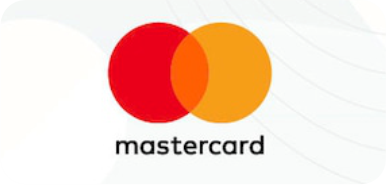Mathematicians, traders, and students exploring number patterns usually ask about the Fibonacci Calculator and How it Works. One way to generate a Fibonacci sequence without manual calculation is through a Fibonacci calculator. This calculator is a powerful tool that effortlessly generates numbers in the Fibonacci sequence making it incredibly useful for traders. This tool is essential for those looking forward to calculating Fibonacci sequences quickly without manual computation.
In this article, we will explore the Fibonacci calculator and how it works, its applications, and its significance in different fields.
What Is a Fibonacci Calculator?
Let’s talk about the Fibonacci sequence before learning about the Fibonacci Calculator.
The Fibonacci sequence is a series of numbers where each number is the sum of the two preceding ones, starting from 0 and 1. This pattern has extensive applications in nature, financial markets, computer algorithms, and even design. Meanwhile, our focus here is on the financial markets.
On the other, a Fibonacci calculator is a digital or online tool designed to compute Fibonacci numbers instantly. Instead of manually adding the numbers in the sequence, you can input a specific term or range, and the calculator will return the corresponding Fibonacci value.
How Does a Fibonacci Calculator Work?
A Fibonacci calculator uses a mathematical algorithm to generate Fibonacci numbers based on a user-inputted value. it eliminates the need for manual calculations by automating this process. You just input the desired Fibonacci term, and the calculator provides the result instantly. It works by following the mathematical formula of the Fibonacci sequence:
F(n)=F(n−1)+F(n−2)
Where:
- F(n) is the current Fibonacci number
- F(n-1) is the previous number in the sequence
- F(n-2) is the second previous number in the sequence
For example:
- F(0) = 0
- F(1) = 1
- F(2) = 1 (0+1)
- F(3) = 2 (1+1)
- F(4) = 3 (1+2)
- F(5) = 5 (2+3)
For a more Clearer understanding:
- Input a number – You enter a value nnn, representing the position in the Fibonacci sequence.
- Algorithm processing – The calculator applies the formula F(n)=F(n−1)+F(n−2)F(n) = F(n-1) + F(n-2)F(n)=F(n−1)+F(n−2) to compute the result.
- Instant output – The Fibonacci number at the entered position is displayed.
Types of Fibonacci Calculators
- Basic Fibonacci Calculator: Computes Fibonacci numbers up to a certain range.
- Fibonacci Ratio Calculator: Used for financial analysis, calculating Fibonacci retracement and extension levels.
- Recursive Fibonacci Calculator: Uses recursion to generate Fibonacci sequences.
- Iterative Fibonacci Calculator: Uses loops for faster computation.
Applications of a Fibonacci Calculator
This Fibonacci Sequence has extensive applications in nature, financial markets, computer algorithms, and even design.
1. Financial Markets and Trading
One of the most common applications of the Fibonacci calculator is in financial trading, specifically in technical analysis. Traders use Fibonacci retracement levels to predict potential support and resistance levels in stock, forex, and crypto markets. The key Fibonacci retracement levels are 23.6%, 38.2%, 50%, 61.8%, and 100%. These levels help traders identify entry and exit points based on historical price movements.
2. Mathematical Computations
Mathematicians and students use Fibonacci calculators to generate Fibonacci numbers for research and academic purposes. The sequence has connections to the golden ratio (1.618), which appears frequently in geometry, algebra, and number theory.
3. Computer Science and Algorithms
In computer science, Fibonacci sequences play a crucial role in algorithm design, data structures, and optimization techniques. The Fibonacci search algorithm and dynamic programming methods rely on these calculations for efficiency.
4. Nature and Science
Many natural phenomena follow the Fibonacci sequence. Examples include Flower petals often follow Fibonacci numbers, Spiral galaxies and hurricanes exhibit Fibonacci patterns and DNA structure and human anatomy demonstrate Fibonacci relationships.
5. Design and Architecture
Designers and architects use the Fibonacci sequence to create aesthetically pleasing designs. The golden ratio derived from Fibonacci numbers influences the proportions of buildings, paintings, logos, and even user interfaces in digital design.
How to Use a Fibonacci Calculator
Using a Fibonacci calculator is simple and requires just a few steps:
- Choose the term number: Enter the sequence number you want to compute.
- Select the calculation method: Some calculators offer options for recursive or iterative methods.
- Click calculate: The tool will generate the corresponding Fibonacci number instantly.
- Use additional features: Some advanced Fibonacci calculators allow you to compute Fibonacci retracement levels for trading analysis.
Popular online Fibonacci calculators include:
- Fibonacci Sequence Calculator by Omni Calculator
- Fibonacci Calculator by Investing.com
- Math is Fun Fibonacci Generator
Advantages of Using a Fibonacci Calculator
Using a Fibonacci calculator comes with several benefits that make calculations faster, more accurate, and more convenient. Whether you are a trader, student, mathematician, or someone simply curious about the Fibonacci sequence, this tool can save you time and effort. Here’s why you should use one:
1. Saves You Time
Manually calculating Fibonacci numbers can take a lot of time, especially when dealing with large numbers. A Fibonacci calculator instantly gives you the results, allowing you to focus on applying the numbers rather than calculating them.
2. Ensures Accuracy
When doing Fibonacci calculations by hand, it’s easy to make mistakes, especially as the numbers get larger. A Fibonacci number calculator eliminates human error, ensuring precise and reliable results every time.
3. Easy to Use
Most Fibonacci calculators have a simple and user-friendly interface. All you need to do is enter a number, and the tool will generate the correct Fibonacci value. You don’t need any special math skills to use it.
4. Works for Many Fields
A Fibonacci sequence calculator is useful in different areas, including:
- Trading – Helps identify Fibonacci retracement and extension levels.
- Mathematics – Assists students and researchers in solving Fibonacci-related problems.
- Computer Science – Used in programming and algorithm design.
- Design and Art – Helps artists and architects create visually appealing designs using the Fibonacci ratio.
5. Convenient and Accessible
You don’t need a physical calculator or complex software to compute Fibonacci numbers. Most Fibonacci calculators are available online, and some come as mobile apps. This means you can use them anytime and anywhere.
6. Helps with Trading Decisions
If you trade forex, stocks, cryptocurrencies, or even Synthetic Indices, you can use a Fibonacci retracement calculator to identify price levels where the market might reverse. This can help you make better trading decisions and increase your chances of success.
Conclusion
In conclusion, a Fibonacci calculator is an essential tool for anyone working with Fibonacci numbers. It simplifies the process of generating Fibonacci numbers, making calculations fast, accurate, and hassle-free.
By understanding how the Fibonacci sequence works and using a calculator to apply it, you can unlock new insights into financial markets, nature, and even creative fields. If you’re looking for a reliable Fibonacci calculator, explore the recommended tools and start leveraging this incredible number sequence today!
Frequently Asked Questions (FAQs)
What is the Fibonacci sequence used for?
- The Fibonacci sequence is used in finance, computer science, nature studies, art, and architecture to analyze patterns and structures.
What is the golden ratio, and how is it related to Fibonacci?
- The golden ratio (≈1.618) is derived from dividing consecutive Fibonacci numbers. It appears in nature, design, and financial markets.
How accurate is the Fibonacci calculator?
- A Fibonacci calculator provides precise results as long as the correct input is given.
Can I use Fibonacci numbers for trading?
- Yes. Traders use Fibonacci retracement levels to identify support and resistance areas in financial markets.
Are Fibonacci numbers found in nature?
- Yes. Fibonacci numbers appear in flower arrangements, pinecones, shells, and even human anatomy.
Is there a formula for Fibonacci numbers?
- Yes. The formula is F(n) = F(n-1) + F(n-2), where F(0) = 0 and F(1) = 1.










